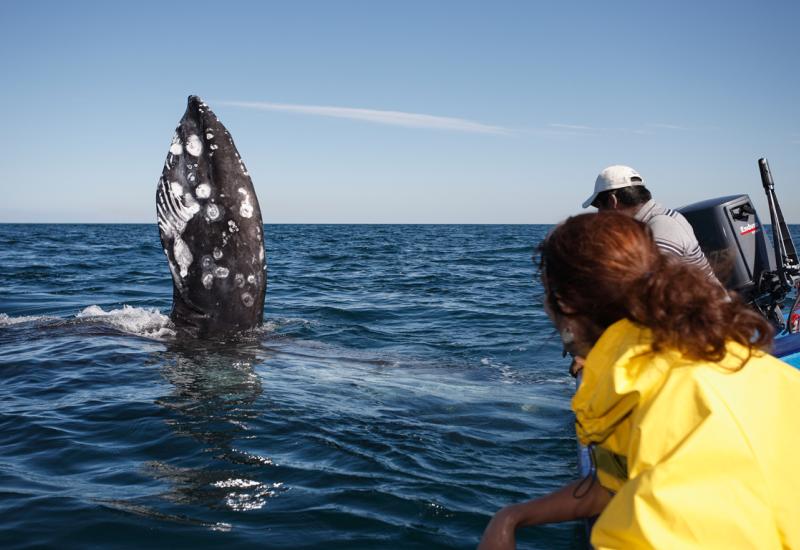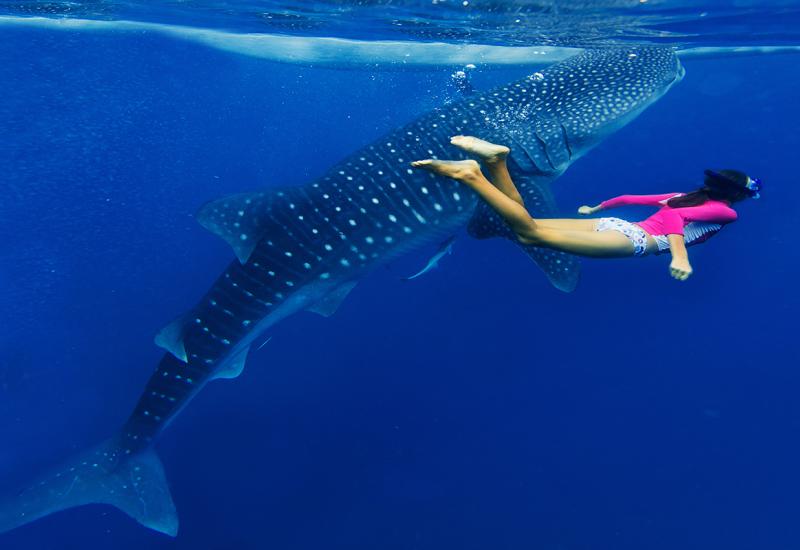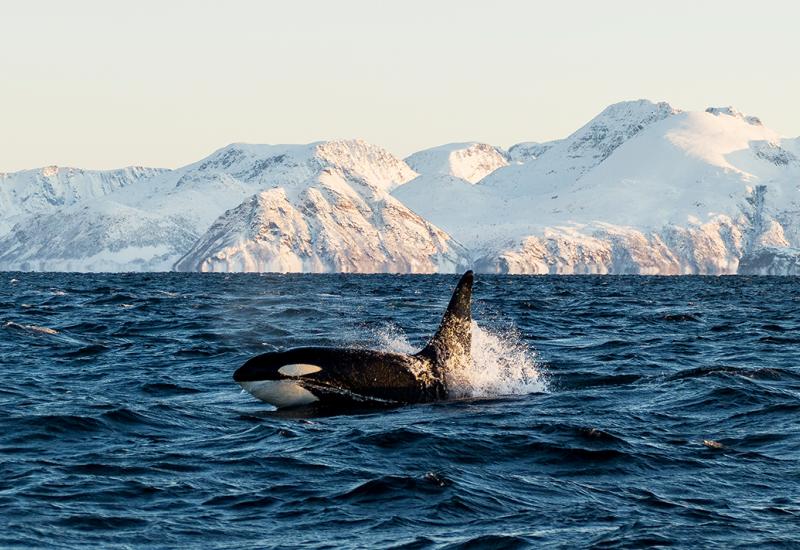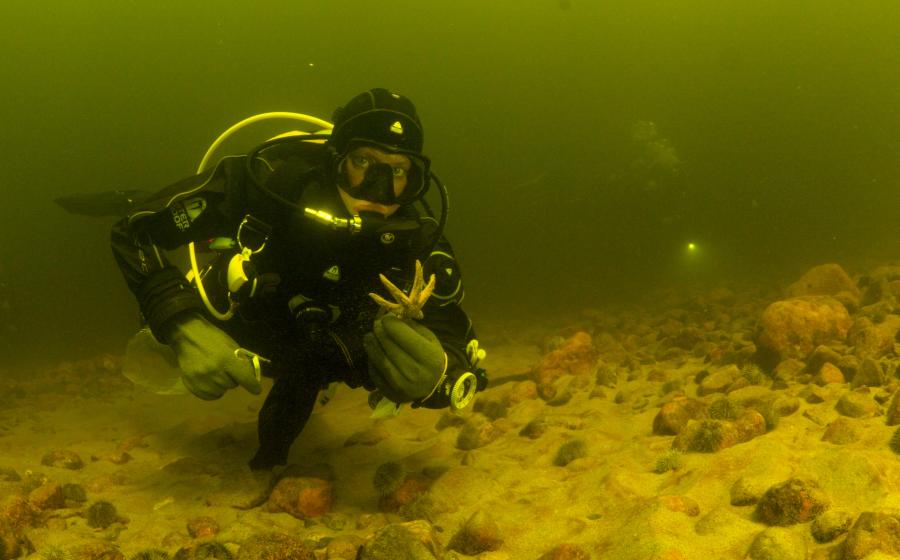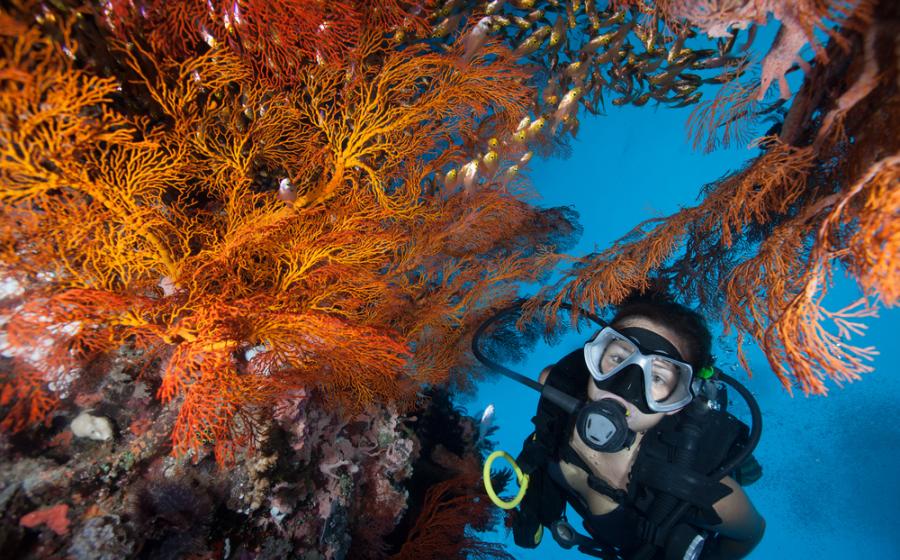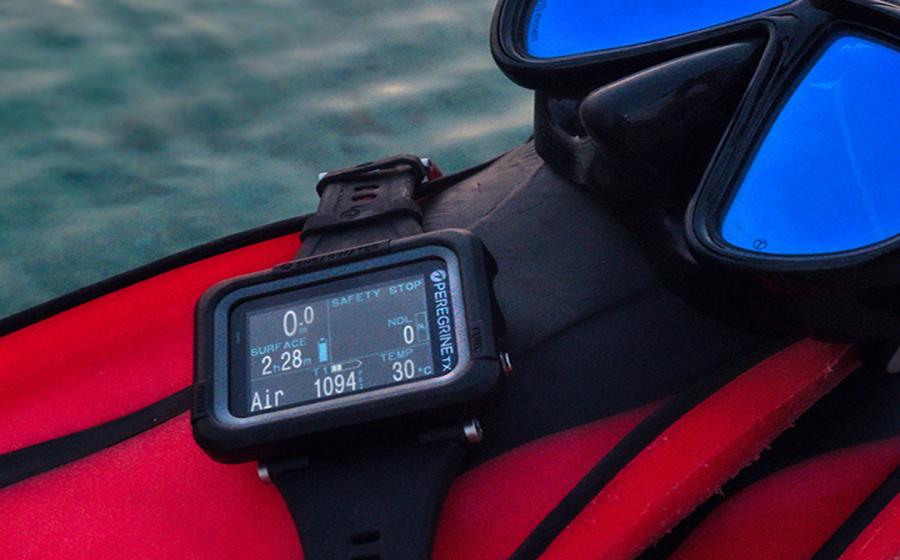Epic Whale and Dolphin Encounters
Nudibranchs and shrimp are cool. But one can hardly call these little critters our kindred spirits. Whales and dolphins, on the other flipper, care for their young, have complex social lives, are our size and often much, much larger. They are undeniably intelligent. People worldwide feel a special affinity for these most impressive of life forms, alien yet familiar.
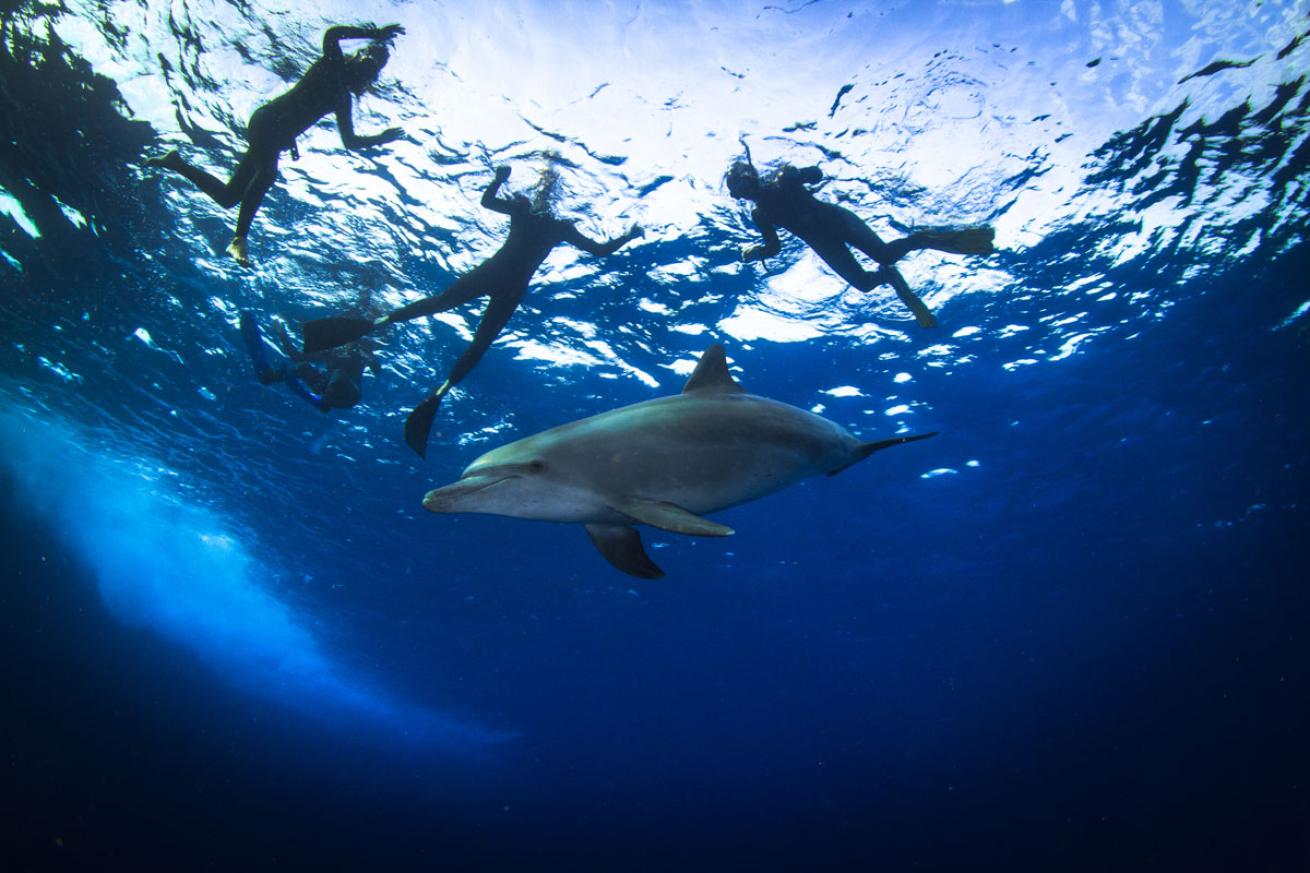
Shutterstock.com/Kristina VackovaSnorkeling, rather than SCUBA is usually preferred when interacting with dolphins and whales in the water.
We—the lucky few compelled to leave terra firma whenever possible— can venture into Ocean’s realm to meet many species of marine mammals up close and personal. Snorkeling, rather than SCUBA, is usually preferred, and in many cases required, means of enjoying in-water time with these charismatic megafauna. Snorkeling allows one to enter the water more easily and quietly, and get back onto the boat quickly. Without tank, BCD, and regulator one is streamlined, providing a major advantage when swimming. It’s also easier for boat operators to keep an eye on snorkelers.
Here follows the first of two installments of an epic cetacean roundup in which we’ll take a look at a total of ten species of whales and dolphins, where and when to find them and how to experience these life-changing encounters.
Humpback Whales (Megaptera novaeangliae)
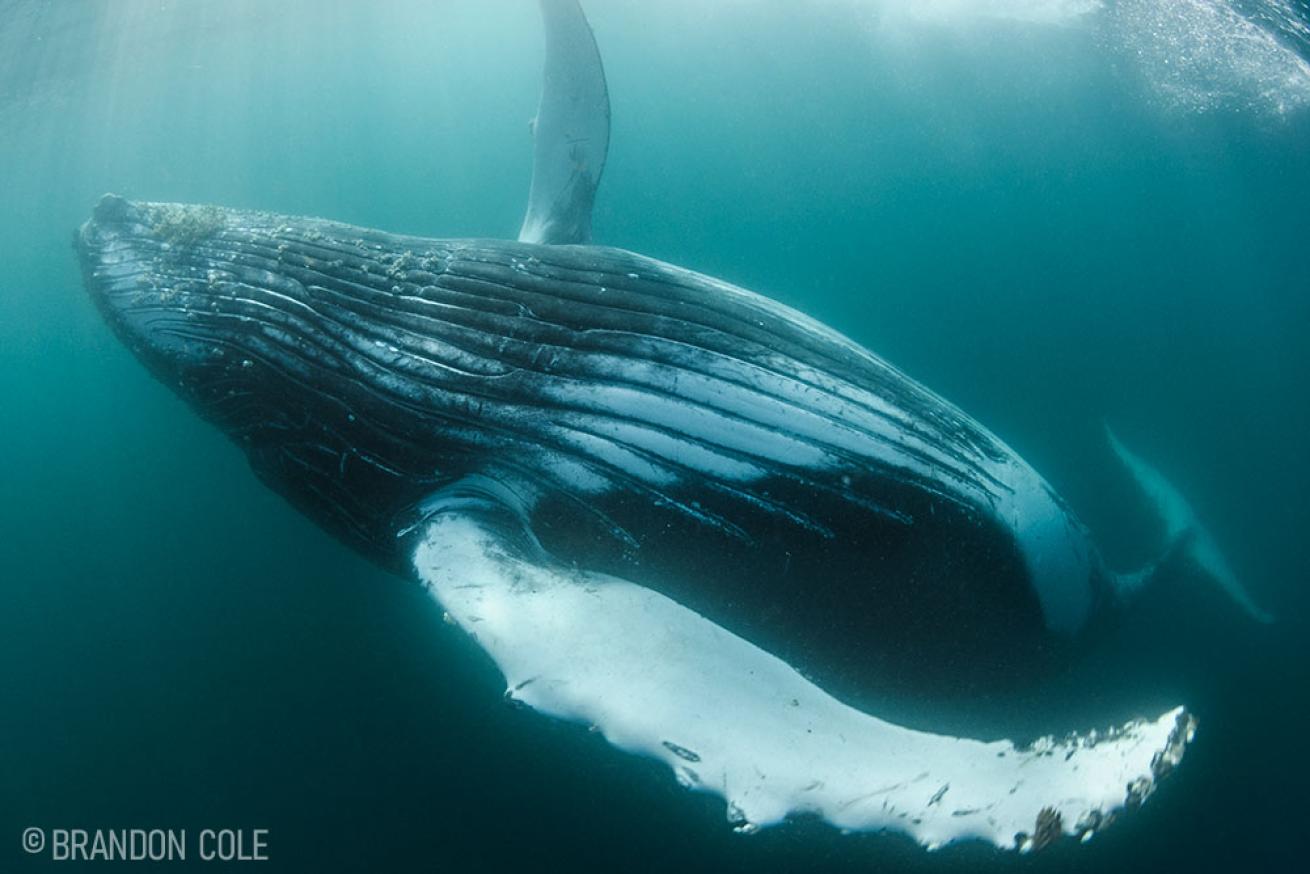
Brandon ColeA playful humpback whale upside down just below the surface. Humpbacks migrate north along the Wild Coast during the annual Sardine Run event.
There likely are more opportunities to swim with this heavyweight superstar than any other whale species. Tonga and the Dominican Republic (on the Silver Bank) are the two most popular locations. Both countries have had swim with whale programs in place for decades. Winter and early spring is whale time: July through November in Tonga, and January through early April in the Dominican Republic. Encounters occur in the whales’ calving grounds, providing snorkelers with heartwarming views of 35 to 50-foot-long mothers and their newborns which typically measure 12 to 15-foot-long as babies. When the mother is comfortable in the presence of people, the pair may “settle” and hover five to 30 feet under the surface. You’ll likely see the two-ton bundle of joy napping under its mom’s chin or tucked under her airplane-wing-like pectoral flipper. If luck is on your side, you may witness the baby nursing. It will ascend to the surface every few minutes to breathe. Calves are playful and curious, sometimes approaching floating human spectators. Adult males with mating on their minds, and juveniles of both genders, are also hanging around the area. In Tonga, you can choose liveaboard or land-based operators, while on the Silver Bank, liveaboards are the ticket.
French Polynesia, Australia, and South Africa (during its sardine run event) are additional destinations for spotting humpbacks. The Socorro Islands offshore Baja, Mexico is unique in giving you a chance to see humpbacks whales while scuba diving. Each country has its own regulations regarding how to legally and safely swim with the whales without harassing them. Patience and a slow, cautious approach allow the whales to call the shots, coming closer to people or moving away as they see fit, is the best way for us to observe these remarkable creatures.
Author’s operator of choice: Whale Discoveries in Tonga
Orcas (Orcinus orca)
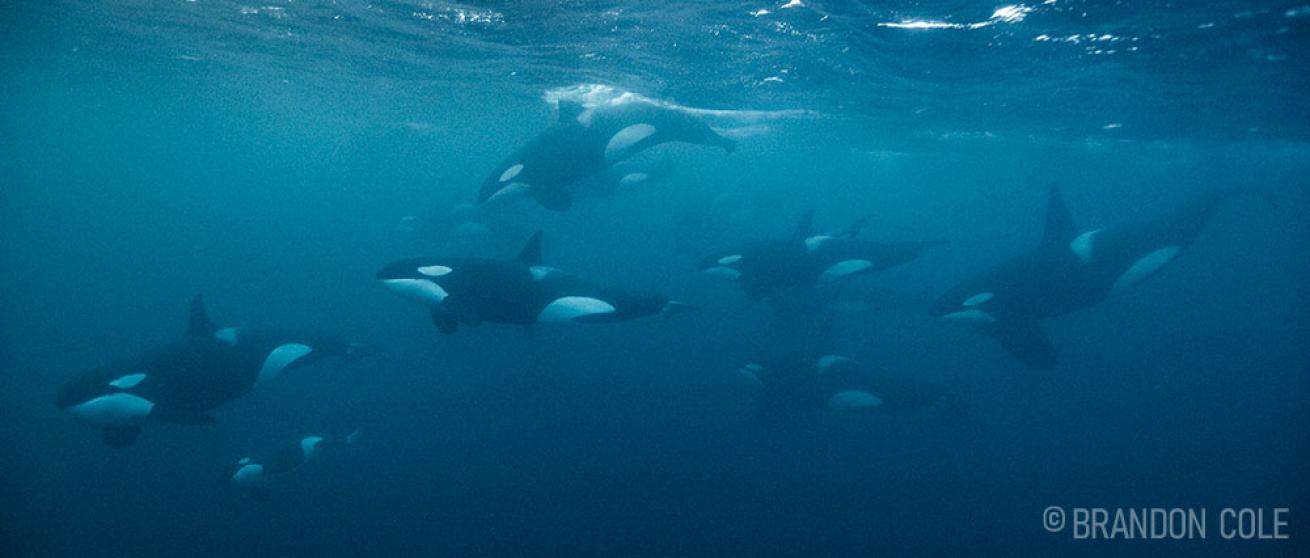
Brandon ColeOrca whales, also called killer whales seen swimming in a fjord in winter.
Why would anyone travel to the Arctic circle, in winter, with the intention of submerging in seawater barely above the freezing point? For a chance to swim with the ocean’s apex predator, of course. Hundreds of killer whales feeding on herring in the fjords of northern Norway between late October and February prove an irresistible draw for hardcore whale fans seeking an extreme adventure amidst stunning scenery straight out of Viking movie set. Some people wear drysuits, others use specialized wetsuits, but all agree that the thrill of an in-water encounter with orcas makes one, at least temporarily, forget all about the chill.
Due to the potentially harsh weather, super low light levels, and the wily ways of the orcas—they can be here one day and gone the next—underwater photography can be a real challenge, so keep your gear simple and compact and make sure to focus on what’s really important, capturing the magic with your mind’s eye rather than stressing over cameras. Luck and persistence play a big part in successful orca expeditions, so always be ready to slip in quickly and quietly when the boat captain or guide advises. Don’t skip any opportunity! You can warm up later back at your hotel or on the liveaboard. You never know when a family pod of killer whales will cruise close. Or you may strike the motherload and drop in on the coveted chaos of a predation event with orcas working together to herd and feast on the herring. In recent years, humpback whales have been crashing the party, so you may end up seeing them too!
Orcas are occasionally seen by snorkelers and divers in other places such as Baja, Galapagos, and Papua New Guinea, but Norway is the most reliable location.
Author’s operator of choice: Northern Explorers in Norway
Dwarf Minke Whales (Balaenoptera acutorostrata subspecies)
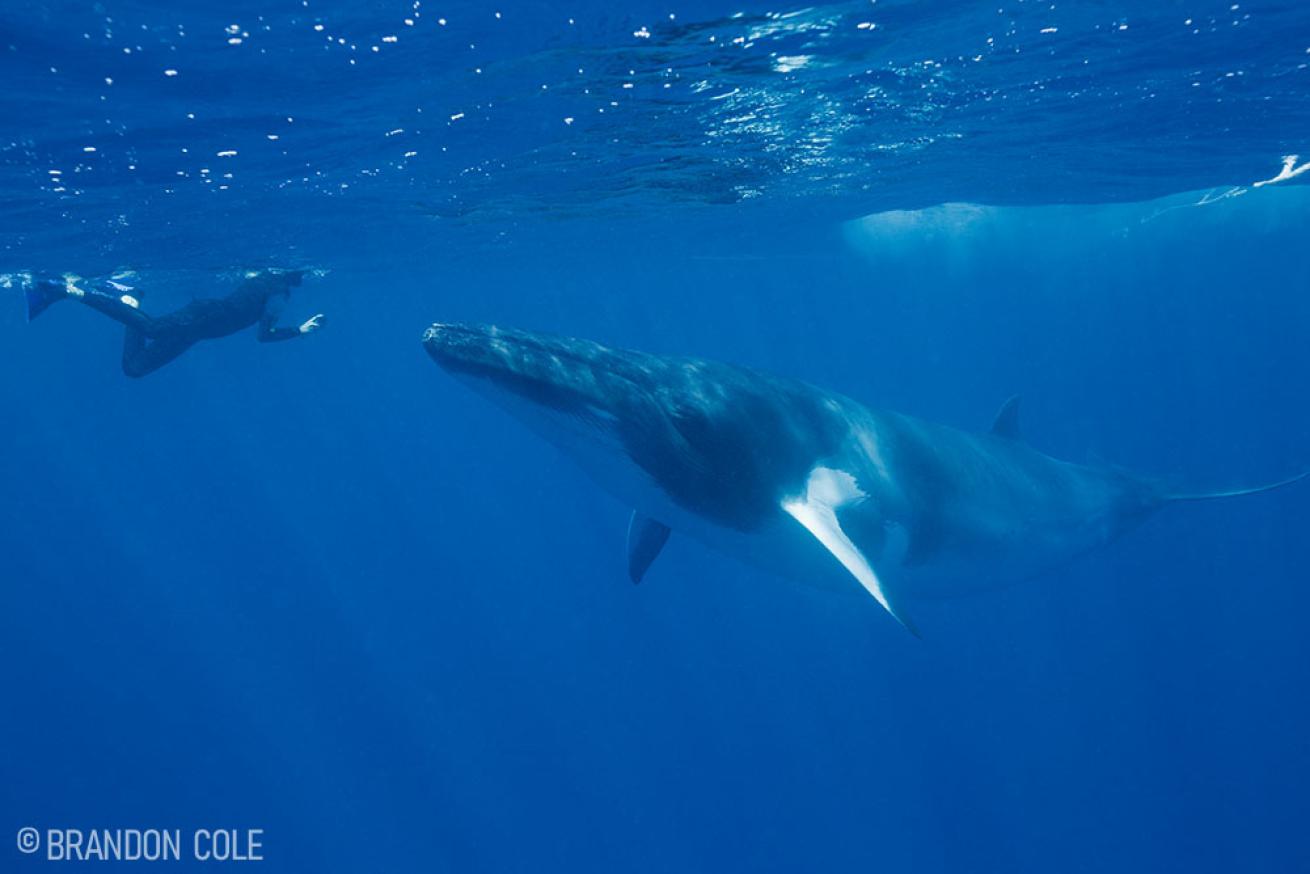
Brandon ColeDwarf minke whale greets a snorkeler in Australia on Mike Ball Expeditions.
Everyone thinks of coral when Australia’s Great Barrier Reef (GBR) is mentioned, but few know that the famous living landmark seen from space also hosts a special marine mammal visitor each austral winter, the dwarf minke whale. Averaging about 20 feet in length, this baleen or rorqual whale has a pointed snout, sleek profile, and small, white pectoral flippers. Normally a solitary species, scientists are not certain why they aggregate on the northern GBR’s Ribbon Reefs, especially at classic scuba diving sites like Lighthouse Bommie and Steve’s Bommie, but they postulate this may be a place for subadults to meet and greet one another for pre-breeding courtship. This is the only known minke aggregation site in the world, and by far and away your best bet to see this beautiful, inquisitive, mini-sized leviathan underwater. It’s also your opportunity to be a citizen scientist. By contributing photos and video footage to James Cook University’s Minke Whale Project you will be aiding their on-going dwarf minke whale research.
How to achieve minke nirvana? Simply hop onto a liveaboard out of Cairns that holds the proper permits and certifications, and head offshore for a few days, or a week during June or July. Slip into the water when instructed, hold onto the surface ropes, relax, and prepare for transcendence. The whales do the rest, cruising underneath or ascending right beside you to check you out. There’s nothing quite like staring into the wise, kind eye of a whale, a privilege that’s capable of sparking a deep connection with a kindred spirit, alien yet familiar. The minkes are accustomed to this tried and true program developed over many years. Our strict compliance with the protocols (including holding onto the rope, no diving downward, and of course no touching!) ensures the whale’s safety and gives them the confidence to make repeated, close passes, sometimes interacting with the snorkelers for hours on end.
Author’s operator of choice: Mike Ball Dive Expeditions
Hector’s Dolphins (Cephalorhynchus hectori)
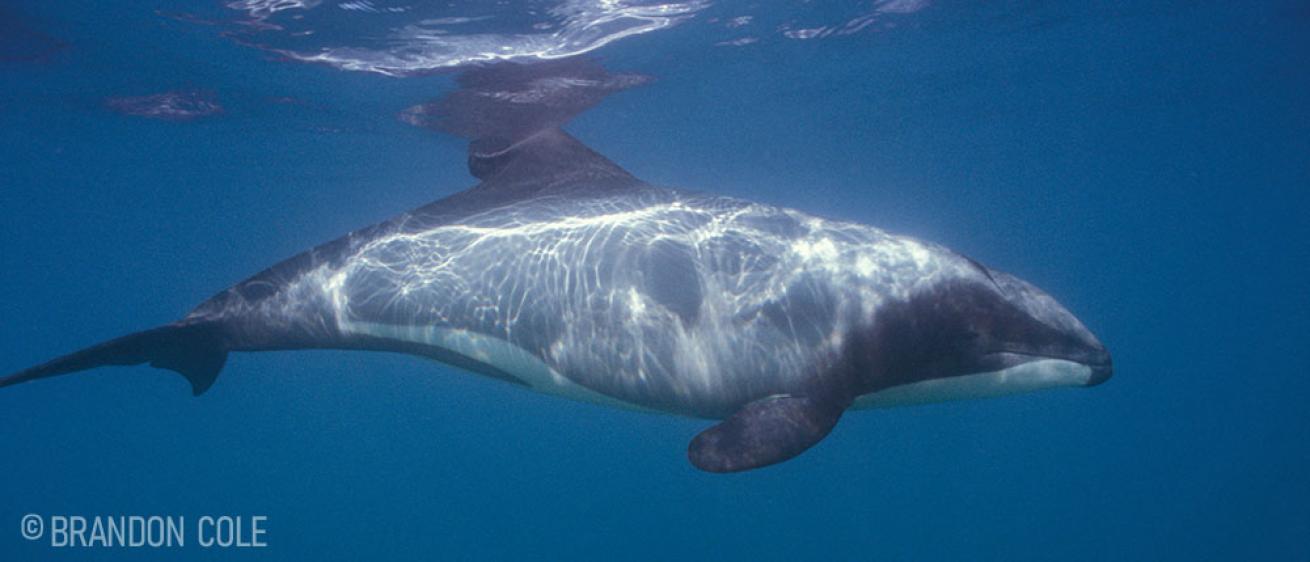
Brandon ColeHector's dolphin in New Zealand.
The smallest oceanic dolphin at less than five feet in length and 130 pounds in weight, this endemic species lives exclusively in New Zealand’s coastal waters where it favors shallow bays and estuaries. It is classified as endangered by the IUCN, with approximately 15,000 individuals surviving today. Entanglement and drowning in fishing nets in past decades was the major culprit responsible for their decline from an estimated population of 50,000 in 1970. An excellent place to reliably find them today is Akaroa on the South Island’s Banks Peninsula. A 90-minute drive from Christchurch, where a marine mammal sanctuary helps to provide a safe haven for the handsomely marked black, white and gray dolphins with their diagnostic Mickey Mouse ears’ rounded dorsal fins. Hector’s dolphins are also known as “Tutumairekurai” which means ‘special ocean dweller’ in the native Maori language.
Well-organized, conservation-minded wildlife ecotourism is widespread throughout New Zealand, and it’s no exception here in Akaroa where visitors can easily encounter Hector’s dolphins throughout the year. Visitors can embark on regularly scheduled three-hour-long boat cruises in the picturesque harbor and just around the dramatic headlands. Stay onboard to enjoy watching the little dynamos enthusiastically bow riding, somersaulting and belly flopping, and just generally gamboling about with their pod mates. Or better yet, suit up and take the plunge. Thick wetsuits are provided to help insulate swimmers from the chilly seawater, which ranges from the low 50s in winter to low 60s in summer. Though visibility can be poor in the teal-colored water, it doesn’t take away from the unbridled fun of being buzzed by a half dozen rambunctious Tutumairekurai.
Author’s operator of choice: Black Cat Cruises
Atlantic Spotted Dolphins (Stenella frontalis)
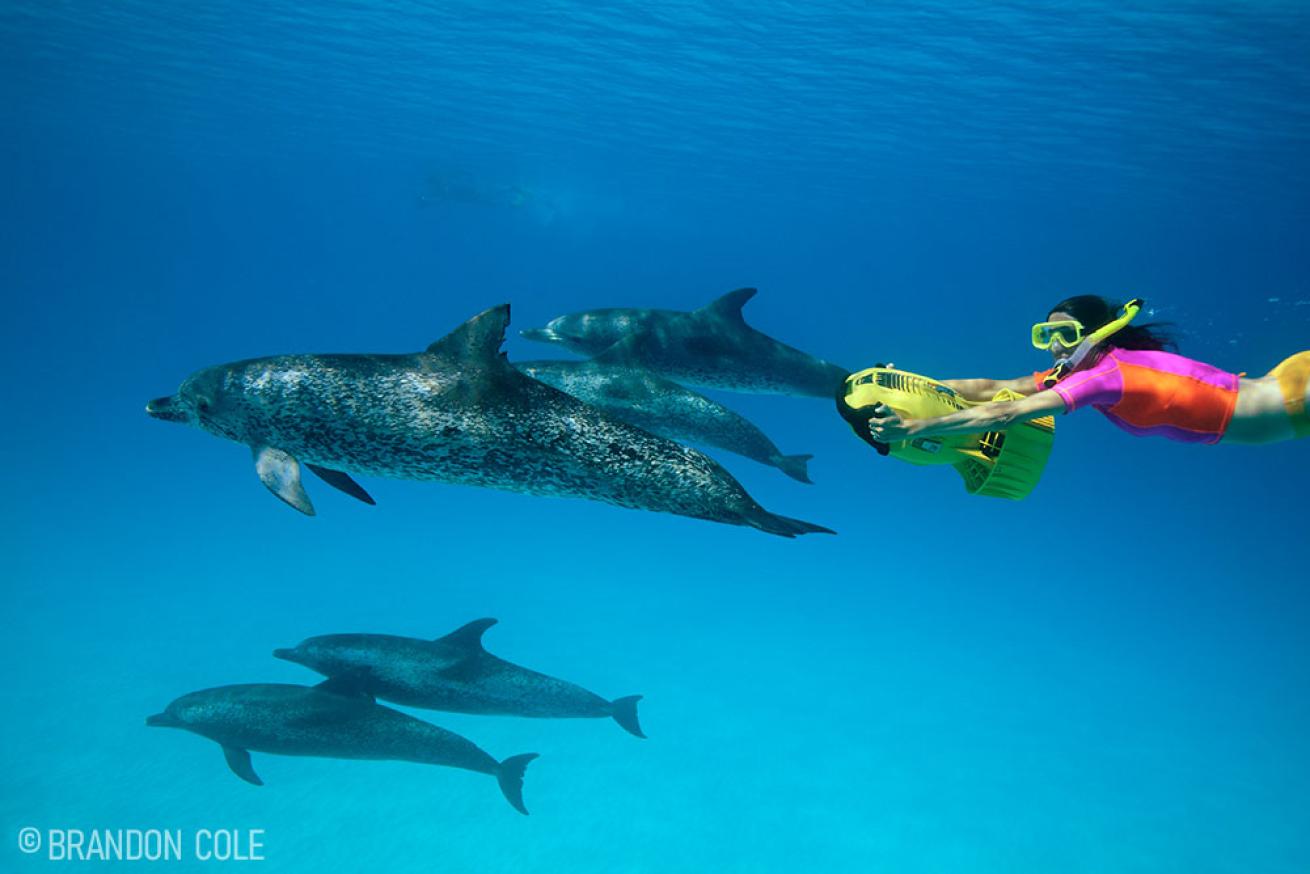
Brandon ColeAtlantic Spotted dolphins interact with woman using a scooter in the Bahamas.
Swimming with wild dolphins in the warm, clear waters of the Bahamas is another of Planet Ocean’s top cetacean encounters. For more than 30 years, scientists have been studying (and tourists frolicking) with this extended family pod numbering 100 odd members. Experts can recognize many individual dolphins by their specific markings and pigmentation (spotting increases with age) and even signature behaviors. Stenella frontalis primarily feed at night on squid and flying fish in deeper water, and spend daytime hours resting, socializing, and of course playing over the shallow sandbanks. Though sightings are possible year-round, spring through early fall is generally considered best. Most of the action in recent years has been centered off the island of Bimini. Operations include landbased day operators in the Bahamas, and a liveaboard boat out of Florida.
When spotted dolphins are in the right mood, they seem to genuinely enjoy being entertained. Feel free to swim for all you’re worth, spin around, dive down, and sing through your snorkel like you’re possessed. A good large bore, dry snorkel and long, freediving fins go a long way in helping strong swimmers keep up their workout. Counter to the stealth strategy used with humpback and minke whales, these dolphins thrive on energy and respond to it; the more you play with them, the more they play with you. Showing them your best dolphin kick moves, using a monofin, or racing about with a DPV can get them really amped up. When the dolphins have had enough of your shenanigans, they will mellow out and turn their attention back to their own kind. Respect their need for peace, recover from your happy exhaustion back on the boat, and laugh and smile while you review your photos and footage. A GoPro is an excellent tool for capturing the unforgettable encounter—auto everything and away you go.
Author’s operator of choice: Dolphin Dream Team, a liveaboard with convenient departures from Florida


